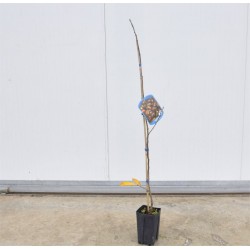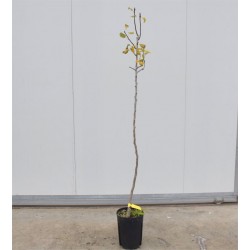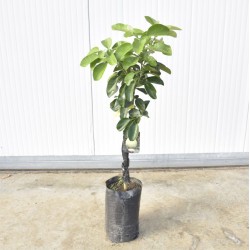Japanese Loquat Tree
Generalities:
The Japanese medlar is a tree much loved both for its sweet fruits and for its ornamental qualities. This plant of clear oriental origins has been cultivated in our country for over two centuries. It should not be confused with the common medlar, a plant native to Mediterranean Europe and naturalized in our continent since time immemorial. The botanical characteristics of the Japanese medlar are very particular. For example, it has a very late flowering, in the middle of autumn, which is very appreciated by bees. To produce its fruits, medlars, however, it needs particular climatic conditions and cultivation precautions.
- jar 22cm, height 150/170cm
Generalities:
Loquat (Eriobotrya japonica Lindl.) Is a plant native to eastern China, where it is still cultivated, as well as in Japan, in temperate-warm areas; widespread in the United States and in the Mediterranean area mainly for ornamental purposes, while cultivation takes place in Spain, Valencia, Italy, the province of Palermo and a little in Calabria. It belongs to the Rosaceae family, subfamily Pomoidee, but the genus is Eriobotrya, japonica species. It is an evergreen plant, with large tormenting leaves on the lower pages, superficial root system. Flowering goes from November to February, with pentamer flowers and with 20 stamens and 5 pistils, the number of which varies from 200 to 600, with the selection, flowers that are gathered in panicles. The fruits are tomatoes, with 1-5 seeds gathered in the center, generally small (average weight 30-55 g, the varieties with a higher weight are rare), round, elliptical, egg-shaped or pear-shaped; the color of the peel goes from pale yellow to bright orange; the color of the pulp goes from white to orange, including different shades of yellow. The seeds are large with brown integument.
Cultivation and Care :
The cultivation of the medlar of Japan can take place on different types of soil. For those who want to plant a single specimen, any soil that has medium fertility may be fine, in fact, the plant also tolerates relatively poor substrates. However, if you want to obtain a good quantity of crops, it is still good to evaluate the choice of a soil that is on average rich in organic matter and that fully responds to the needs of the plant. This applies even more to loquats. The ideal soil should have a pH between 7-8 therefore either neutral or slightly basic. The cultivation substrate must necessarily be well drained, avoid too compact soils that can facilitate the stagnation of the water. The suitable exposure for the Loquat is in full sun.





















